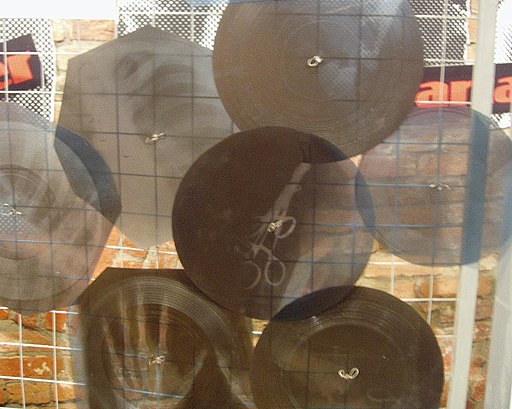These days, of course, we have a lot of music. We have streaming services, podcasts, the radio – cds and records if you still listen manually… Press a button, tap a screen, and another space opens up around us, an aural space that can take us anywhere and everywhere. That magical thing that is music. In our society, we’re in a time of abundance and glut. Often, I draw a blank as to what to put on because there’s TOO MUCH out there. I appreciate a playlist or a radio show, the curation of an album, because music can be incessant and unwelcome and treated so very very lightly – this magical mysterious thing.
So imagine now, the reverse of this. Imagine 1950s Soviet Russia, imagine sitting in a kitchen there. Say something like this –

by Ninara via search.creativecommons.org
– in St Petersburg (then Leningrad). And imagine that music was a heavily censored thing. No jazz was allowed, no rock ‘n’ roll, no foxtrot even, if you’re a matronly lady remembering your young and heady days; no no no, for that might lead to dissolute behaviour. No mambo, no tango – no saxophone, for a while; no émigré music; no songs from the gulags, definitely not. No, to pretty much everything except patriotic fervour. Culture had parameters and had to be approved. Veer away from this and life got dangerous.
In the 1940s, when music was smuggled through – by sailors, by diplomats – it was extremely expensive. That is, until a young demobbed soldier with a recording lathe in St Petersburg (Leningrad) worked out how to make a record from an old hospital x-ray. Bootleggers jumped on it and suddenly records made out of x-rays were everywhere. Although in a hidden shh-shh kind of way. But they were cheap, and easily transportable, and a teenager could buy one for a rouble or a rouble and a half.
A youth subculture was on the rise, that of the stilyagi (literally “a style hunter; stylish”). A stilyagi was enamoured by western dress, and western culture generally; they were Beat generation Russians, and naturally, they listened to these forbidden x-ray records. They might have looked something like this:

Tatyana Pankratova Русский: Татьяна Панкратова, CC BY-SA 3.0 via Wikimedia Commons
(The picture is from a musical comedy, Stilyagi, made in 2008 but set in mid-50s Moscow.) The KGB did clamp down on these bootleg records. They flooded the market with fakes, and they forbade home recordings of this hooligan trend – but the hooligan trend had taken hold.
Various names emerged for x-ray records: bones; bone music; ribs; music on the ribs; jazz on bones. Physically, the x-rays were cut into raggedy 7” discs, and the middle was burned through with a cigarette so they could sit on a turntable. They were played at 78rpm but they only lasted for 5-10 plays. They were ephemeral, and hugely varying in sound quality. Examples and reconstructions of what a bootlegger’s room might have looked like, and what the recording lathes looked like can be seen here.
And of course, there are the records themselves to browse through.
X-rays were easily obtainable from hospitals and medical archives because they were flammable, and people wanted rid of them. Sapphire needles to cut the grooves on the plastic could be bought from a flea market, and all you needed then was a big coat and a shady street corner, or the park after dark.
Here is a link to a page of songs, that if you were a 1950s stilyagi you might be asking that guy in the coat for.
Contemporary musician Stephen Coates has produced a wonderful project around this story, including an accompanying online exhibition, a short film, and a fantastic BBC Between the Ears programme.
These records seem such beautiful broken objects, ringing with history. They feel eerie and menacing – the image of them, the haunting sound: they smell of both fear and freedom; they make my chest feel tight. Do explore them if you’ve time, and then head over to our streaming services Naxos and Naxos Jazz. There it all is, and so much more. For free, for everyone. Let’s be thankful.

